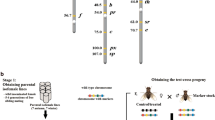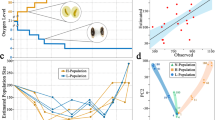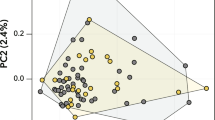Abstract
THE fact that the biological environment may determine the frequency of chromosome-changes in populations was first emphasized by Dubinin, Sokolov and Tiniakov1, while Dobzhansky2 first discovered the effect of selection on inversions, and the relation between changes of inversion frequency and seasonal cycles (in Drosophila pseudoobscura).
This is a preview of subscription content, access via your institution
Access options
Subscribe to this journal
Receive 51 print issues and online access
$199.00 per year
only $3.90 per issue
Buy this article
- Purchase on Springer Link
- Instant access to full article PDF
Prices may be subject to local taxes which are calculated during checkout
Similar content being viewed by others
References
Dubinin, Sokolov and Tiniakov, Biol. Zhurn., 6, 1007 (1937).
Dobzhansky, Genet, 28, 162 (1943).
Dubinin and Tiniakov, "Structural Variability of Chromosomes in Urban and Rural populations" (in the press).
Author information
Authors and Affiliations
Rights and permissions
About this article
Cite this article
DUBININ, N., TINIAKOV, G. Seasonal Cycle and Inversion Frequency in Populations. Nature 157, 23–24 (1946). https://doi.org/10.1038/157023a0
Issue Date:
DOI: https://doi.org/10.1038/157023a0
This article is cited by
-
Fitness consequences of polymorphic inversions in the zebra finch genome
Genome Biology (2016)
Comments
By submitting a comment you agree to abide by our Terms and Community Guidelines. If you find something abusive or that does not comply with our terms or guidelines please flag it as inappropriate.



